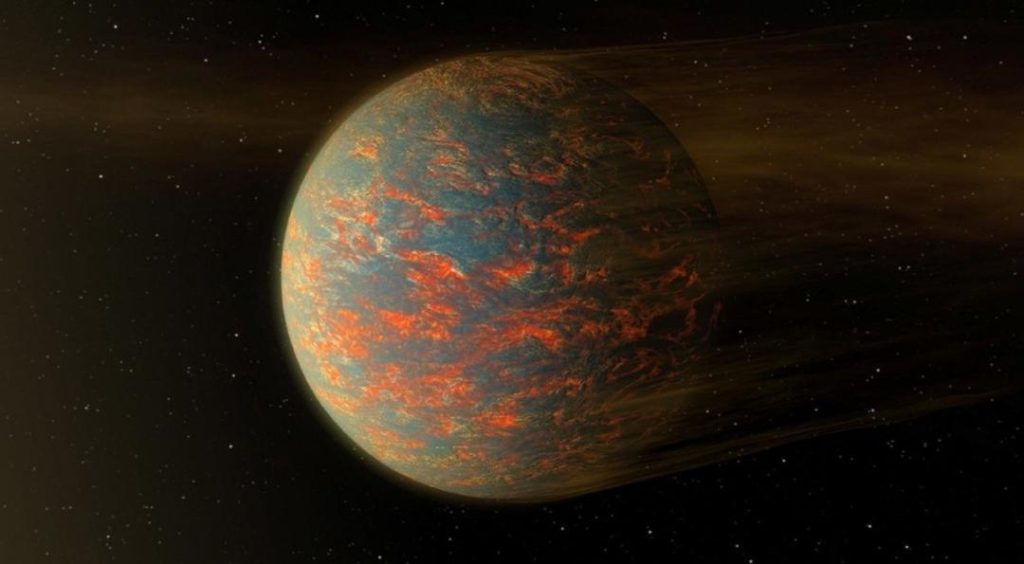
Newly-discovered Super-Earth Heats up & Freezes Every 300 Days
In a fascinating discovery, astronomers have found a newly-discovered “super-Earth” that orbits a Sun-like star just 20 light-years from our planet. This extraordinary planet, which is bigger than Earth but lighter than Neptune and Uranus, boasts an extreme climate that swings from scorching hot to freezing cold every 300 days.
The super-Earth, which has been dubbed a “tidal-locked planet,” orbits its star in an oval shape, causing it to experience extreme temperatures as it approaches and recedes from the star. The planet’s proximity to its star means that it receives intense heat and radiation, causing its surface to reach temperatures of up to 3,600 degrees Fahrenheit (2,000 degrees Celsius) during the first part of its year. This is hot enough to melt lead and vaporize water.
However, as the planet moves further away from its star, it enters a period of extreme cold, with temperatures plummeting to a chilling -270 degrees Fahrenheit (-168 degrees Celsius). This is a temperature so low that it would be colder than the coldest places on Earth, such as Antarctica.
This incredible temperature fluctuation is caused by the planet’s unique orbit, which is tilted at an angle of 30 degrees relative to its star. This tilt causes the planet to experience extreme seasons, with the hottest temperatures occurring when it is closest to the star and the coldest temperatures occurring when it is farthest away.
The discovery of this super-Earth was made using the transit method, which involves monitoring the light from a star to detect the presence of a planet passing in front of it. The team of astronomers used the Transiting Exoplanet Survey Satellite (TESS) to make the discovery, which was later confirmed using the Hubble Space Telescope and other ground-based telescopes.
“This is a very interesting planet because of its unique orbit,” said Dr. Brian Lee, a researcher at NASA’s Ames Research Center and lead author of the study. “The planet’s temperature fluctuations are unlike anything we’ve seen before, and it’s a great opportunity for us to study the effects of climate change on a planetary scale.”
The discovery of this super-Earth is a significant breakthrough in the field of exoplanetary science, and it has important implications for our understanding of the potential for life beyond Earth. While the planet’s extreme temperatures make it unlikely to support life as we know it, the discovery of a planet with such a unique climate could provide valuable insights into the potential for life on other planets.
In addition, the discovery of this super-Earth has significant implications for the search for life beyond our solar system. As we continue to explore the universe, we may find other planets with similar temperature fluctuations that could potentially support life.
The discovery of this super-Earth is a reminder of the vastness and diversity of the universe, and the incredible discoveries that await us as we continue to explore and study the cosmos.






